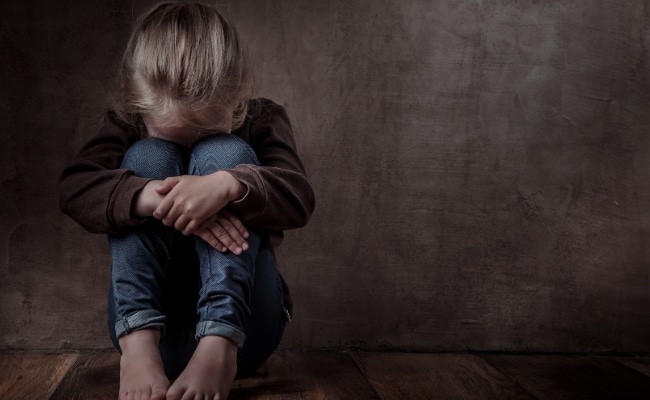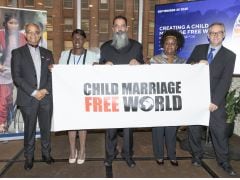Building The Case for Zero: India's Crackdown On Child Labour Sets Global Example

New Delhi: As the world struggles to meet its 2025 goal of ending child labour under Sustainable Development Goal 8.7, India is showing what's possible. A new report, ‘Building the Case for Zero, as a Tipping Point to End Child Labour', released by the Centre for Legal Action and Behaviour Change (C-LAB), highlights how legal action and community support to rescue children and hold offenders accountable. The data has been collected by Partners of Just Rights for Children network. While 138 million children globally remain in child labour, India is proving that real change is within reach.

Between 2024–25, a total of 53,651 children were rescued across India. Among them, 8,749 were traced missing children, and 90 per cent were found to be engaged in the worst forms of child labour. The states with the highest number of rescues were Telangana (11,063), followed by Bihar (3,974), Rajasthan (3,847), Uttar Pradesh (3,804), and Delhi (2,588).
In cases of sexual exploitation, 2,971 children were rescued, with West Bengal leading with 1,005 cases, followed by significant numbers from Bihar, Odisha, Maharashtra, and Rajasthan.
A total of 27,320 rescue operations were conducted nationwide. Of these, 86 per cent targeted child labour, 10 per cent addressed sexual exploitation, and 4 per cent focused on child begging.
In terms of missing children, 11,409 cases were identified, and 8,749 children were successfully traced. The top states for tracing missing children included West Bengal, Maharashtra, and Bihar.

Legal action was taken in all 27,320 cases, resulting in 9,595 FIRs (35 per cent) and 6,959 GD (General Diary) entries (25 per cent). There was a 92 per cent conversion rate from GDs to FIRs. A total of 5,809 arrests were made, with 85 per cent related to child labour cases. The leading states in terms of arrests were Telangana (2,247), Bihar (790), and Rajasthan (573).
India's response to child labour has been unprecedented. Through the Just Rights for Children network which is active in across 24 states and over 450 districts, civil society has partnered with legal systems to initiate legal action in every rescue case. This level of legal follow-through, be it FIRs, arrests, or court challans, is unprecedented and essential. As the JRC model shows, rescue without prosecution is no justice at all.
The initiative combines legal enforcement with community engagement, survivor rehabilitation, and systemic advocacy. RTI data analysis has been central to this approach, offering a transparent view of FIR registration trends and exposing enforcement gaps.
For instance, states like Telangana, Rajasthan, and Andhra Pradesh boast 100 per cent FIR conversion rates, while others like Uttar Pradesh and Madhya Pradesh lag significantly, highlighting uneven implementation. India's legal response is backed by a steady framework:
Constitutional Safeguards: Articles 21A, 23(1), 24, and 39 ensure education, ban trafficking and child labour, and uphold dignity.
Key Laws:
- The Child Labour Amendment Act (2016), JJ Act (2000), and the Bharatiya Nyaya Sanhita (2023) empower enforcement bodies to criminalise and prosecute trafficking, sexual exploitation, and forced labour.
- ILO Convention No. 182: India ratified the global agreement on eliminating the worst forms of child labour in 2017.
Challenges That Remains
Despite progress, key gaps remain. States like Uttar Pradesh and Madhya Pradesh show weak enforcement, while some regions fail to convert complaints into legal action. Poor documentation, including missing Form 17s and SDM orders, persists. In states like Odisha and Punjab, high rescue numbers contrast with few arrests, highlighting weak follow-up.
The PICKET Framework

India's path forward has been guided by the PICKET strategy:
- P – Policy: Enact and enforce strict anti-child labour laws.
- I – Interagency Coordination: Mobilise police, CSOs, judiciary, media.
- C – Capacity Building: Train systems in trauma-informed care.
- K – Knowledge & Awareness: Launch public education campaigns.
- E – Economic Empowerment: Support at-risk families with education and livelihood.
- T – Technology: Monitor and dismantle online trafficking networks.
India's fight against child labour is proving that real change is possible. Through strong legal action, community support, and the PICKET strategy, the country is setting a global example. While challenges in enforcement remain, India's model offers a clear path forward as the world strives to meet the 2025 goal.
Stories
- Team NDTV | Thursday December 04, 2025 , New Delhi
Ministry Of Women & Child Development Launches 100-Day Campaign To End Child Marriage By 2030
- Devyani Madaik | Saturday September 27, 2025
JRC organised a high-level UNGA side event along with other partners, to chart a course toward a child marriage free world
- Bhuwan Ribhu | Monday August 18, 2025
Lowering the age of consent risks weakening child protection, and instead India must focus on fully enforcing POCSO with stronger preventive measures
- Bhuwan Ribhu | Monday August 18, 2025
Human trafficking is the second-largest crime in the world. It generates $150 billion a year, according to global estimates
- NDTV | Monday July 28, 2025
India fights against child labour through strong legal action, community support, and the PICKET strategy
- Rachna Tyagi | Wednesday July 30, 2025
India's POCSO victims face delayed, inadequate compensation; urgent, uniform national schemes are vital for justice and survivor rehabilitation
- Rachna Tyagi | Monday June 16, 2025
AI-generated abusive content like deep-fake manipulation and other emerging forms like Webcam Child Sex Tourism (WCST) are on the rise
- Devyani Madaik | Friday July 25, 2025
For over two decades, Bhuwan Ribhu's legal fight against child exploitation earned him the World Jurist Association's Medal of Honour
- Bhuwan Ribhu | Wednesday July 30, 2025
Auspicious Akshaya Tritiya, meant for prosperity, sadly marks child marriages, a tragic misfortune for our daughters
- Pandit Deepak Dubey | Wednesday April 30, 2025 , नई दिल्ली
कन्या दान को पुण्य कार्य इसलिए माना जाता है क्योंकि पिता से लगाव होता है. यानी इसमें पिता स्नेह का त्याग करता है. इसका बाल विवाह से कहीं लेना-देना नहीं है. हालांकि अभी भी कुछ जगहों पर बाल विवाह की कुप्रथाएं हैं. बाल विवाह अभिशाप है.











